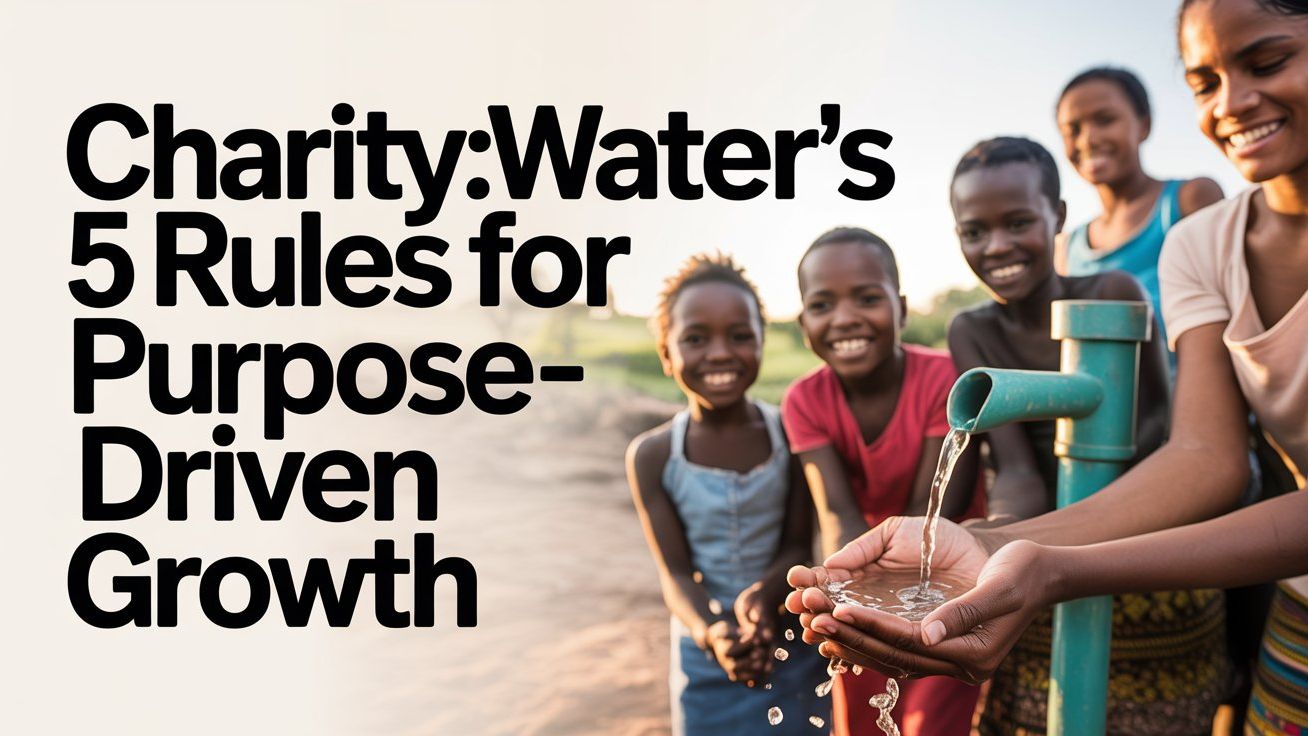
10 Ways to Use StoryBrand for Nonprofits to Make Donors the Hero and Raise More Funds
Nov 24, 2024Many nonprofits struggle to connect with donors in a way that truly inspires action.
Often, they focus too much on their own achievements, telling a story about themselves.
While it’s natural to want to highlight your organization’s impact, this approach misses a key opportunity: inviting your donors into the story.
That’s where the StoryBrand framework shines.
When you use StoryBrand principles, it shifts the focus away from your nonprofit and puts the donor front and center as the hero.
When donors feel like they’re the ones creating change, they’re far more likely to engage and give.
Here are 10 practical ways to use StoryBrand to clarify your message, deepen donor relationships, and raise more funds.
10 Practical Tips to Apply StoryBrand to Your Nonprofit
1. Stop Talking About Yourself
Nonprofits often focus their messaging on their own accomplishments:
- “We’ve served 10,000 meals this year.”
- “We’ve been fighting homelessness for 20 years.”
While these statements show your organization’s impact, they don’t answer the donor’s most pressing question: “How can I make a difference?”
Instead, shift the focus to the donor.
- “Your generosity provides meals to families who need them most.”
- “With your help, we can fight homelessness and give people a fresh start.”
This small change makes donors feel like an essential part of the solution.
2. Make Donors the Hero
Every great story has a hero—someone who faces a challenge and overcomes it. In your nonprofit’s story, the hero isn’t your staff, volunteers, or even the people you serve. The hero is your donor.
Your nonprofit plays the guide, helping the hero (donor) succeed. Think of characters like Yoda in Star Wars or Gandalf in The Lord of the Rings. They’re not the main characters, but they provide wisdom and a clear path forward.
Position your nonprofit the same way:
- Guide donors by showing them the problem they can solve.
- Provide a simple plan to help them succeed.
- Celebrate the impact they’ve made as the hero of the story.
3. Focus on Simplicity
People don’t have the mental energy to decode complicated messages. To engage your donors, keep your messaging simple and to the point.
Answer three questions clearly:
- What’s the problem?
- How can the donor help?
- What will their help accomplish?
Example:
- Complex: “Our mission is to empower underserved communities with sustainable solutions that foster long-term growth.”
- Simple: “Your $30 gift provides clean water to a family for a month.”
The simpler your message, the easier it is for donors to say yes.
Consider taking the time to write a StoryBrand One-Liner for your nonprofit ministry.
4. Tell Real Stories
Stories are more powerful than statistics. Instead of overwhelming donors with numbers, focus on personal stories that highlight the difference their support makes.
For example:
“Maria used to walk six miles every day to fetch water. Thanks to your support, her village now has clean water. Maria is in school, dreaming of a bright future—because of you.”
This kind of storytelling connects emotionally and makes donors feel like their contributions truly matter.
5. Stay in Touch
One of the biggest mistakes nonprofits make is going silent between fundraising campaigns. Donors only hear from them when they’re asking for money.
Instead, build trust by staying in touch regularly. Send monthly updates that celebrate the impact donors are making. Highlight success stories, share behind-the-scenes insights, or show how their gifts are being used.
Tip: Avoid calling these updates “newsletters.” Frame them as “impact stories” or “hero updates” that focus on what the donor has achieved.
6. Write a Simple Plan
Donors need a clear, actionable plan to follow. Make it easy for them to understand how they can help and what steps to take.
Your plan should answer three questions:
- What do you want me to do? (e.g., donate, volunteer, share)
- How do I do it? (e.g., click this link, sign up, join)
- What happens when I act? (e.g., children get meals, families get shelter)
Example:
“Choose a project. Donate monthly. Help a family get clean water and a brighter future.”
7. Be Strategic About Your Appeals
Don’t overwhelm donors with constant asks. Instead, plan your appeals carefully:
- Regular Updates: Share stories that highlight donor impact, without asking for money.
- Seasonal Campaigns: Use key moments like year-end giving or Giving Tuesday to make targeted appeals.
- Storytelling: Use emotional, personal stories in your campaigns to show the need and the solution.
By balancing storytelling with strategic asks, you’ll keep donors engaged and avoid fatigue.
8. Don’t Wait for the Perfect Story
Some nonprofits hold back on communication, waiting for a groundbreaking story to share. But small wins matter just as much.
Every act of generosity has a ripple effect. Share updates like:
- A family receiving groceries this week.
- A new volunteer joining your team.
- A village breaking ground on a clean water project.
These smaller stories keep donors connected and remind them that their support is making a difference.
9. Make Giving Easy
Don’t make donors work hard to figure out how to give. Use clear, simple calls to action that make the process straightforward.
For example:
- “Give $25 to provide school supplies for a child.”
- “Sign up to help pack meals this Saturday.”
- “Join our monthly giving program to support kids year-round.”
The easier it is for donors to take action, the more likely they are to do so.
10. Start Now
You don’t need to overhaul everything at once to use StoryBrand effectively. Start small:
- Rewrite one appeal or email with the donor as the hero.
- Share one story this month that highlights donor impact.
- Map out your next campaign using the StoryBrand framework.
When you focus on making your donors the star of the story, you’ll create deeper connections and inspire them to give generously.
The bottom line?
It’s not about what you’ve accomplished—it’s about what donors can accomplish through you.
Tell their story, and watch your fundraising take off.







